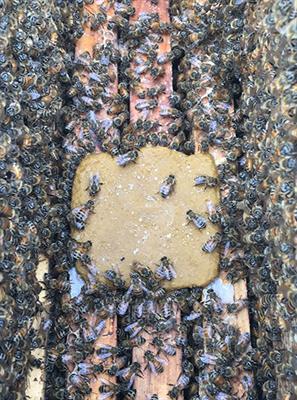
Many beekeepers assume their beehives don’t need pollen substitute as long as there is an ample supply of quality, year round pollen sources; however, drought conditions and winter frosts can prevent your bees from receiving enough high quality pollen to raise brood successfully.
Contents
Nutritional Benefits
Pollen is essential to honeybee health and wellbeing; however, during times of poor weather or limited forage availability it may become unavailable to them. Feeding pollen replacement products is a simple yet effective solution that can support colony wellbeing in such circumstances.
One of the most popular bee pollen substitutes consists of sugar syrup mixed with high-protein mixes of proteins, fatty acids, vitamins and amino acids that closely resemble natural pollen. There are various feeders available to keep this mix inside beehives so bees can easily access it.
Researchers have discovered that in addition to being nutritionally valuable, bee pollen can also increase blood circulation and help alleviate symptoms of depression, fatigue and other health conditions associated with lack of energy. Doctors sometimes prescribe bee pollen supplements for this purpose – though anyone taking medication for diabetes, being pregnant or breastfeeding should first consult their healthcare provider prior to using bee pollen supplements.
Helps Extend Brood Rearing
Beekeepers have come to realize the necessity of supplemented feeding as many areas of the country experience frequent pollen shortages, necessitating them to offer pollen substitutes which mimic its composition in order to feed their bees a balanced diet.
Brood rearing and royal jelly production can have a major impact on honeybee colonies’ health, extending their lives and helping them stockpile enough food stores to prepare for winter.
Researchers in India conducted a study where three diets using germinated pulses such as soybean, mungbean and pigeon pea were introduced along with various amounts of sugar powder to test. Their results demonstrated that all diets improved colony attributes such as foraging activity, sealed worker brood area and honey store area when compared to control colonies; with soybean-rich diet being best. For optimal results place your patty at the top of your hive between two brood boxes for best results.
Helps Prevent Nutritional Deficits During Pollen Dearths
Pollen substitutes provide vital nutrition during extreme summer drought or spring freeze situations where there are few or no natural pollen producing plants available; bees will become starved for protein, necessitating cannibalism of brood to survive and population loss within their hive. Pollen alternatives help bridge this nutritional gap to maintain hive health during these difficult periods.
Pollen alternatives provide honey bees with an adequate source of nutrition that closely mirrors that found in natural pollen, providing essential protein sources for raising brood and colony development, along with essential amino acids, vitamins and minerals that contribute to building strong immune systems.
Pande and Karnatak conducted experiments using different germinated pulse flours such as chick pea, horse gram and green gram/mungbean to assess their efficacy as pollen replacements. Colonies fed black gram diet outperformed other treatments; their consumption rate and sealed brood area were significantly greater in these colonies than their peers.
Helps Prevent Varroa Mites
Varroa destructor, introduced into the US during the 1980s and responsible for widespread bee colony losses since. Mites may account for 70-80 percent of US beehive loss.
Varroa infected brood cells cause short lifespans and malformed wings in adult bees. Furthermore, Varroa vectors highly infectious viruses like the devastating Deformed Wing Virus that have devastated many bee colonies worldwide. Unfortunately, infestation levels often reach damaging/detectable levels in surprisingly short amounts of time due to exponential population growth.
GreenLight’s Varroa Treatment targets proteins essential to their physiology; application occurs only when populations exceed an action threshold; this eliminates potential contamination of bee products while delaying resistance development.



